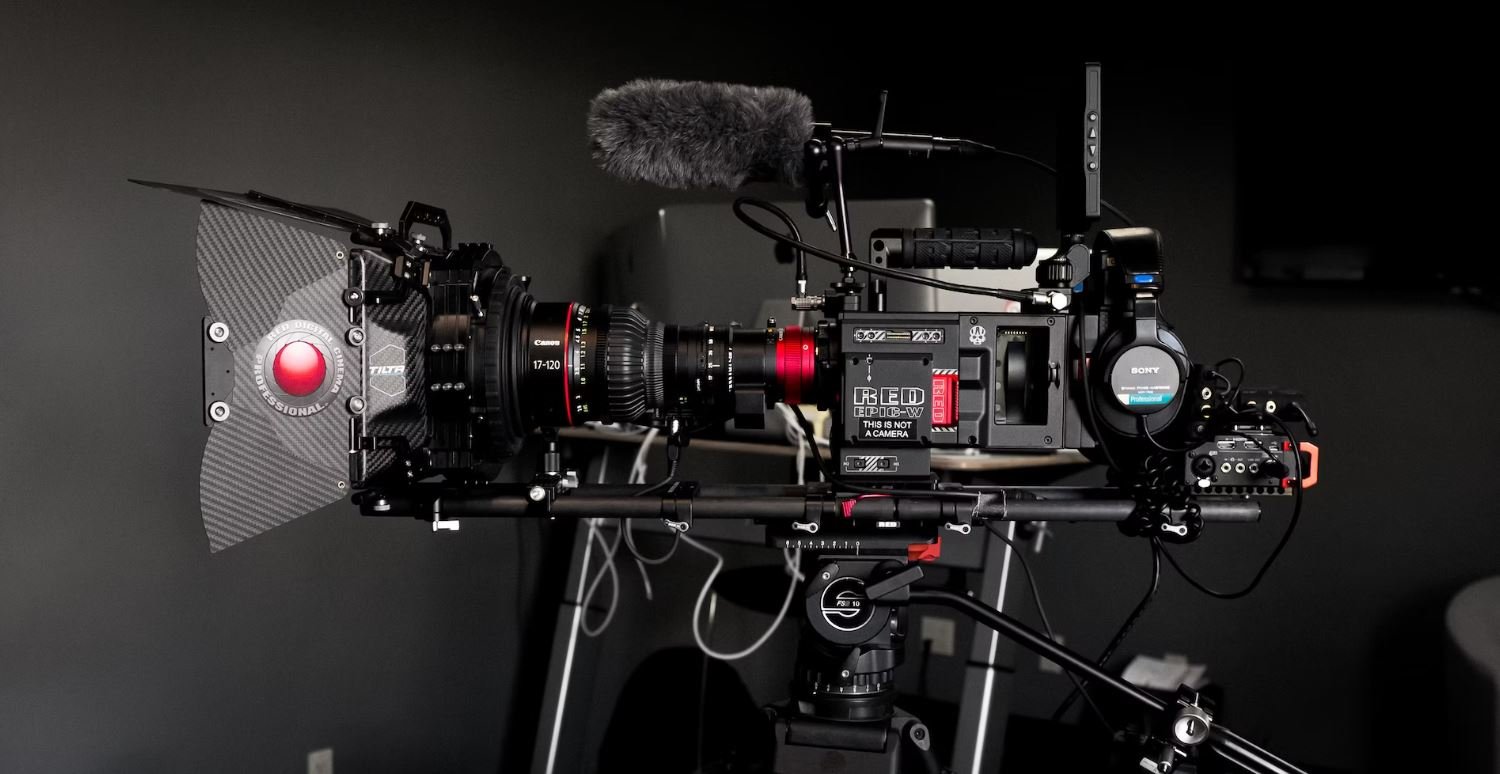Who Owns Deepfake
Deepfake technology, which uses artificial intelligence algorithms to manipulate or create realistic videos of individuals, has rapidly become a concern in recent years. With the potential for misuse and the spread of misinformation, it is important to examine who owns and controls this technology.
Key Takeaways:
- Deepfake technology poses significant challenges in terms of ownership and control.
- Ownership of deepfake technology might lie with tech companies, individual developers, or even state actors.
- Regulation is essential to mitigate the risks associated with deepfakes.
- Collaboration between governments, tech companies, and organizations is crucial to address the issue.
- Public awareness and media literacy play a crucial role in combating the threats posed by deepfakes.
Deepfake technology can be owned by various entities, including tech companies, individual developers, or even state actors. As the technology has evolved, it has become accessible to a broader range of individuals and organizations, making ownership more decentralized and diverse. **Ensuring accountability and responsibility for deepfake content becomes more complex due to the lack of centralized ownership.**
*Interestingly, the ownership of deepfake technology doesn’t necessarily correlate with the responsibility for its misuse.* Even though developers might sell their deepfake models to third parties, they cannot always control how their technology is ultimately used. This highlights the importance of considering the broader ecosystem surrounding deepfakes and implementing comprehensive regulations.
Ownership Landscape
| Entity | Ownership Description |
|---|---|
| Tech Companies | Large tech companies like Google, Facebook, and Microsoft may own deepfake technology through research and development or acquisitions of smaller specialized companies. |
| Individual Developers | Individuals with expertise in artificial intelligence and machine learning can develop deepfake models and own their creations. |
| State Actors | Government entities may invest in deepfake technology to strengthen their strategic capabilities in areas such as cyber warfare, intelligence operations, or political manipulation. |
While tech companies often lead in deepfake research and development, their motivations for owning this technology vary. Some companies focus on advancing AI capabilities for ethical purposes, such as developing improved deepfake detection algorithms, while others may optimize deepfake technology for commercial applications.
Recognizing the risks associated with deepfakes, regulatory efforts are underway. Governments worldwide are considering legislation to regulate the use, creation, and distribution of deepfake content. **These regulations aim to create legal frameworks that hold both creators and those who share malicious deepfakes accountable.**
Regulatory Efforts
- The United States has proposed the Malicious Deep Fake Prohibition Act, which aims to criminalize the creation and distribution of malicious deepfake content with the intent to defraud or harm.
- Brussels, the European Union’s capital, is actively discussing legislative proposals to address deepfakes, including potential liability for platforms hosting such content.
Table 2 provides an overview of some of the regulatory efforts across different countries:
| Country | Regulation Description |
|---|---|
| United States | The Malicious Deep Fake Prohibition Act aims to criminalize the creation and distribution of malicious deepfake content. |
| China | The Cyberspace Administration of China released draft regulations requiring clear labeling of deepfake videos. |
| France | Lawmakers proposed a bill that would enable courts to remove deepfake content or block access to websites hosting it. |
Public awareness and media literacy are instrumental in combating the threats posed by deepfakes. Education on recognizing and verifying sources of information can help individuals identify deepfakes and prevent their spread. Collaboration between governments, tech companies, and organizations is crucial to develop robust tools for deepfake detection and identification. Additionally, promoting open-source and community-driven initiatives can facilitate collective efforts in addressing this rapidly evolving technology.
As the battle against deepfakes continues, efforts to detect and mitigate deepfake content should remain a priority. By understanding who owns deepfake technology and implementing appropriate regulations, we can navigate the challenges posed by this powerful and potentially harmful technology.

Common Misconceptions
When it comes to deepfake technology, there are several common misconceptions that people have. These misconceptions often arise from the portrayal of deepfakes in popular culture and misinformation spread through various media channels. It is important to debunk these misconceptions to have a clearer understanding of the topic at hand.
Deepfakes are solely used for malicious purposes
- Deepfakes have a wide range of applications including entertainment and artistic expression.
- Some organizations use deepfakes for educational purposes to simulate scenarios that could otherwise be dangerous or inaccessible.
- While deepfakes can be used maliciously, there are ongoing efforts to develop tools to detect and prevent their misuse.
Only highly skilled individuals can create deepfakes
- With the advent of user-friendly deepfake apps and software, anyone with basic computer skills can create a deepfake.
- There are tutorials and online resources available that guide users on creating their own deepfakes.
- However, creating highly convincing deepfakes may still require a certain level of expertise.
Deepfakes are always easy to spot
- While some deepfakes may have noticeable flaws, advancements in technology have made it increasingly difficult to detect them.
- Deepfake algorithms continue to improve, making it harder for the human eye to distinguish between genuine and manipulated content.
- Detection tools are being developed to combat the rise of sophisticated deepfakes, but it remains a continuous challenge.
Deepfakes are always used to impersonate and defame individuals
- Although deepfakes can indeed be used for nefarious purposes such as tarnishing someone’s reputation, it is not their sole purpose.
- Deepfakes can be utilized in the film industry to create realistic scenes or to bring deceased actors back to life.
- Furthermore, deepfakes have potential applications in fields like virtual reality, healthcare, and training simulations.
Deepfake technology is just a passing trend
- Deepfakes are here to stay, as advancements in AI and machine learning continue to push the boundaries of what is possible.
- The widespread availability of deepfake creation tools indicates the enduring interest and demand for this technology.
- As deepfake technology evolves and becomes more accessible, it is essential for society to be prepared and educated about its capabilities and risks.

The Rise of Deepfake Technology
The advancement of artificial intelligence has allowed for the creation of deepfake technology, which enables the manipulation of audio and visual content with alarming accuracy. Deepfakes have gained significant attention due to their potential to deceive and manipulate public opinion. This article explores the ownership and distribution of deepfake technology, shedding light on the key players in this controversial field.
Social Media Platforms: Enablers or Protectors?
Table showcasing the major social media platforms and their policies regarding the use and dissemination of deepfake content. This data will help assess the responsibility of these platforms in controlling the spread of potentially harmful misinformation.
Companies Utilizing Deepfake for Marketing
Table presenting a list of companies that have utilized deepfake technology for marketing purposes. This information illustrates how advertisers are capitalizing on deepfakes to enhance branding and attract consumers.
Legislative Efforts to Combat Deepfakes
An overview of various countries’ legislative efforts to address the threats posed by deepfakes. This table examines the initiatives taken by governments worldwide to regulate the creation and dissemination of deepfake content.
Leading Deepfake Detection Tools
A comprehensive analysis of the top deepfake detection tools available in the market. This table provides information on the key features, accuracy rates, and ease of use for each tool, aiding individuals and organizations in selecting the most effective solution.
Deepfake Production: Cost Comparison
A breakdown of the costs associated with producing deepfake content. This table explores the expenses involved in creating high-quality deepfakes and highlights any significant differences in cost between various production methods.
Artists Using Deepfake as a Medium
An exploration of the contemporary art scene and the artists who employ deepfake technology as a medium for their creative expression. This table showcases notable artists, their works, and the themes addressed through the use of deepfakes.
Deepfake Lawsuits: A Growing Legal Landscape
A compilation of notable lawsuits related to deepfakes, including cases involving defamation, privacy infringement, and intellectual property violations. This table sheds light on the legal implications surrounding the creation and distribution of deepfake content.
Celebrities Most Affected by Deepfakes
An examination of celebrities who have been targeted by deepfakes, causing reputational damage or public outcry. This table highlights the impact of deepfakes on the lives and careers of individuals in the public eye.
Future Implications of Deepfakes
A look into potential future applications and consequences of deepfake technology. This table explores the positive and negative impacts that may arise as deepfake technology continues to advance.
Conclusion
Deepfake technology presents a complex and multifaceted landscape, highlighting the need for vigilance and regulatory measures. As we navigate this evolving field, understanding the ownership, accessibility, and cultural impact of deepfakes becomes paramount. By delving into the data and exploring the key players and legal battles associated with deepfakes, we can better comprehend the challenges and opportunities that lie ahead. It is crucial to foster responsible usage and develop robust detection mechanisms while maintaining the free flow of creativity and expression.
Frequently Asked Questions
Who owns Deepfake technology?
Deepfake technology is a rapidly evolving field and is not owned by any specific individual or organization.
What is the legal status of Deepfake technology?
The legal status of Deepfake technology varies by jurisdiction. In many countries, Deepfake creations may be subject to laws governing defamation, privacy, intellectual property, and fraud.
Can companies claim ownership over Deepfake creations made using their technology?
Companies that create and develop Deepfake technology may have legal rights over the specific tools and software they provide, but they do not own the resulting Deepfake creations made by individuals.
Are there any copyright issues with Deepfake technology?
Deepfake technology raises concerns regarding copyright infringement, as it involves using copyrighted materials without permission. It is essential to obtain necessary permissions or licenses when using copyrighted works for Deepfake creations.
Can Deepfake creators claim ownership over their creations?
Deepfake creators generally retain copyright ownership over their creations, unless they have signed a contract or agreement transferring those rights to another party.
What are the ethical considerations surrounding Deepfake technology usage?
Deepfake technology raises several ethical concerns, such as potential harm to individuals, deceptive practices, and the spread of misinformation. Responsible use of Deepfake technology involves obtaining consent, clearly labeling manipulated content, and using it solely for non-harmful purposes.
Who is responsible for regulating Deepfake technology?
The responsibility for regulating Deepfake technology lies with governments and legal authorities. Various jurisdictions have started to introduce laws and regulations to address the concerns associated with Deepfake technology.
Can Deepfake technology be used for criminal activities?
Deepfake technology can be misused for criminal activities such as fraud, identity theft, and blackmail. It is crucial for law enforcement agencies to adapt and develop tools to identify and combat such activities.
Can Deepfake technology be used for positive purposes?
While Deepfake technology has been associated with negative implications, it can also be used for positive purposes such as entertainment, visual effects in movies, virtual reality, and historical preservation.
What should individuals do to protect themselves from Deepfake manipulations?
Individuals can take several measures to protect themselves from Deepfake manipulations, including being vigilant about the authenticity of media, using strong privacy settings, avoiding sharing personal information online, and staying informed about the latest trends and developments related to Deepfake technology.




